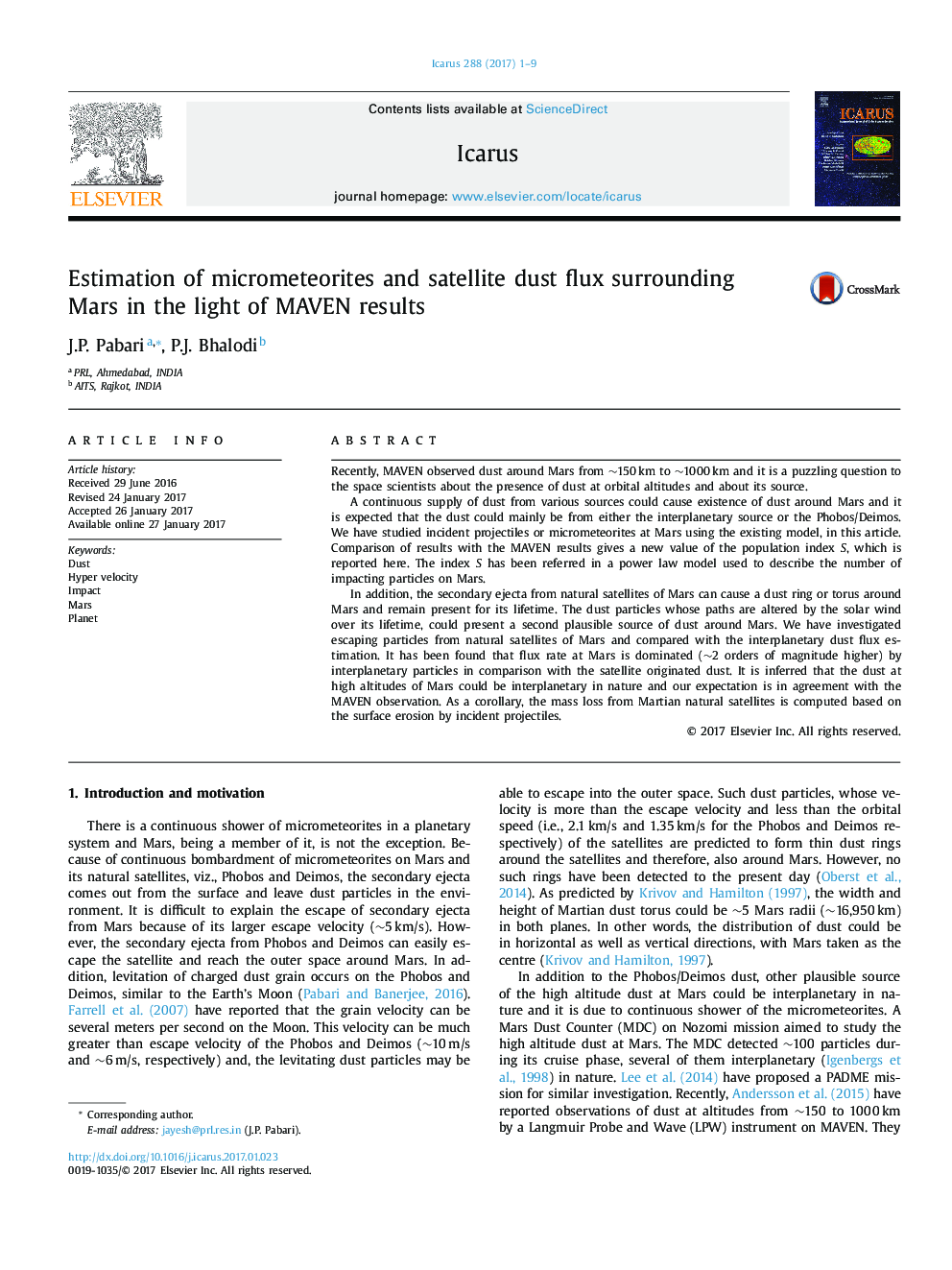| Article ID | Journal | Published Year | Pages | File Type |
|---|---|---|---|---|
| 5487076 | Icarus | 2017 | 9 Pages |
Abstract
In addition, the secondary ejecta from natural satellites of Mars can cause a dust ring or torus around Mars and remain present for its lifetime. The dust particles whose paths are altered by the solar wind over its lifetime, could present a second plausible source of dust around Mars. We have investigated escaping particles from natural satellites of Mars and compared with the interplanetary dust flux estimation. It has been found that flux rate at Mars is dominated (â¼2 orders of magnitude higher) by interplanetary particles in comparison with the satellite originated dust. It is inferred that the dust at high altitudes of Mars could be interplanetary in nature and our expectation is in agreement with the MAVEN observation. As a corollary, the mass loss from Martian natural satellites is computed based on the surface erosion by incident projectiles.
Related Topics
Physical Sciences and Engineering
Earth and Planetary Sciences
Space and Planetary Science
Authors
J.P. Pabari, P.J. Bhalodi,
